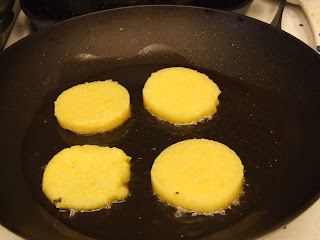
It is really hard to go wrong with shrimp, garlic, butter and white wine; it is why shrimp scampi always looks so good on ads for places like Red Lobster. Sadly, that instant recognition of flavors that the brain makes is seldom realized at those large chain restaurants; however, it is really easy to recreate them at home. As an added bonus it is super fast (good for those days when just a little procrastination will do), and really easy, but you could never tell by the results. You will fill your kitchen with the wonderful smell of sautéing butter and garlic, and make anyone in the vicinity extremely hungry. If that’s not enough to sell you on the greatness of this meal as a quick choice when you really don’t feel like putting in too much effort, it is highly adaptable to your particular likes.
For me, this pasta is straight forward: shrimp, garlic and red bell peppers (yes they show up a lot in my recipe, I guess that makes it pretty obvious how much I like them), and sometimes cherry or grape tomatoes. Adding white wine and Parmesan (on occasion asiago) cheese to these main ingredients rounds out the dish into a flavor packed, filling fast meal. Basically, if you are all set to go and a quick chopper the meal doesn’t have to take any longer than it takes to bring a pot of water to boil and cook linguine or fettuccine (let’s say 25 minutes). If you want to get fancy and melt the cheese over the top add another three minutes in the oven and then you are done, or as they would say in Italy “basta”!

What you need:
Pasta: I prefer linguine or fettuccine for this dish
3 good sized cloves of garlic
1 large red bell pepper
¼ dry white wine
Shrimp (fresh is of course better, but frozen deveined work just great) I prefer larger shrimp.
Crushed red pepper flakes
Salt
Pepper
½ teaspoon dried basil
¼ -1/2 cup grated parmesan (asiago) cheese
Olive oil
1-2 tablespoons butter
(optional around 10 grape or cherry tomatoes)
(in this picture I also have a bit of chopped arugula)
For this one you can really play around with the ingredients. Fresh basil (or arugula) thrown in at the very last moment tastes wonderful, some red onion can add a bit of bite, try veggies that you like with a base of butter, wine and garlic it is really hard to stray too far away from something tasty.
Preparation:
Start heating a pot of water for the pasta
Mince the cloves are garlic
Slice the red pepper into thin strips, then cut strips in half if you prefer smaller pieces

If you using frozen shrimp, thaw them in a bowl filled with luke warm water ( don’t go too hot or you will start to cook the shrimp)
Once the shrimp are thawed remove the shells and drain the water (try to get the shrimp as dry as possible. Sprinkle a pinch of salt and pepper on the shrimp
Once the water starts to boil, add the pasta (I use a handful for one really large serving or two servings.
For timing purposes most linguines take somewhere from 8 to 12 minutes to cook. Since you don’t want to overcook the shrimp you should start preparing the garlic shrimp about a minute or two after you put the pasta in the water

To make the shrimp sauce, heat a medium skillet over medium heat.
Melt the butter plus ~ 2 teaspoons olive oil.
Once the butter has melted add the minced garlic.
Sautee the garlic for 30 seconds to 1 minute (avoid browning the garlic as it gets bitter)
Add red pepper flakes to taste (depending on how much heat you want) I usually add 1 teaspoon
Sautee for another minute or two

Add the white wine
Let the liquid simmer down to about half its original volume
Add the shrimp making sure that they are lying flat on the pan

Cook for about 2 minutes
Then flip the shrimp to cook the other side (if I am adding the tomatoes this is when I add them)
About this time your pasta should be done – stain the pasta.
Once you have the pasta stained the shrimp should be cooked through (another minute or two on the flipped side)
Add your stained pasta to the pan and mix everything together.

Plate the pasta in either a serving dish or the plate your plates
Cover with grated cheese
If you want to melt the cheese down (if you have a lot a cheese and a bit more time you can even brown the top) place the pasta in a preheated (300) oven for another minute or two.
Serve up a heaping bowl full (this was my night before hockey meal, which would probably be two standard sized portions) and enjoy!


































